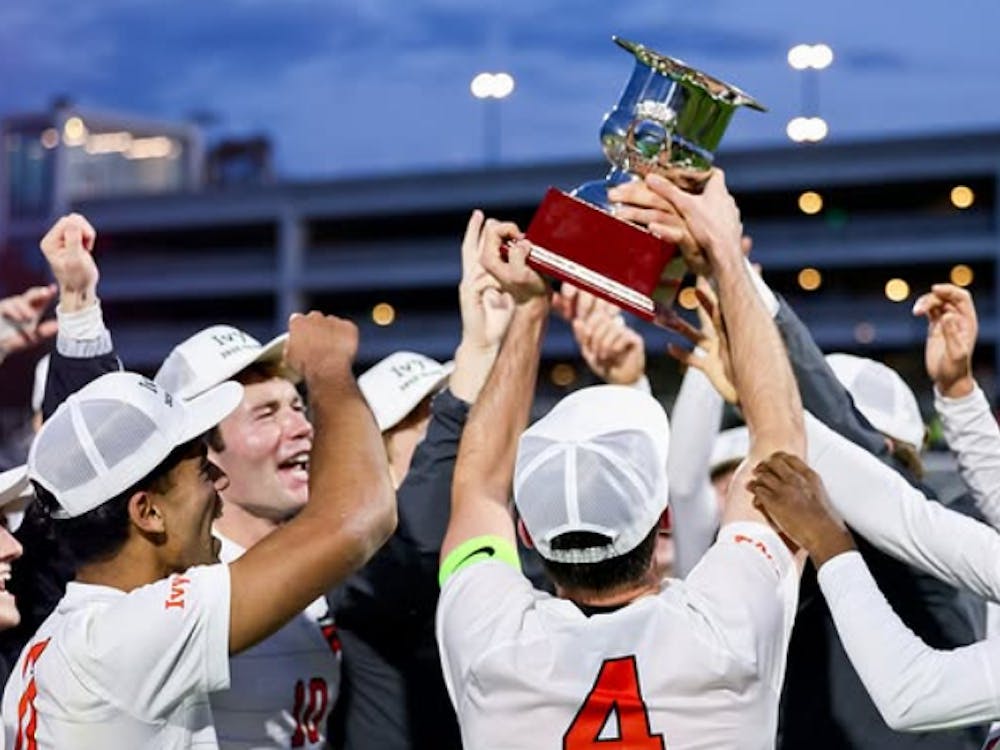When I was in seventh grade, I was the “official” statistician of our middle-school football team. Running up and down the sideline, armed with just a notebook and pen — which were rather ineffective tools when it was raining or when I couldn’t feel my fingers — I was tasked with recording our team’s performance on every play. When we were on offense, it was pretty easy; I might miss a spot on the opposite side of the field by a yard or two, but for the most part, I could tell who had the ball and how far he went.
Defense, however, was another story. When the opposing team’s running back dove into the middle of the line — which was a pretty common play, since few middle-school quarterbacks can really throw the ball well and because our team was traditionally undersized — how was I supposed to tell which of the eight players in the pile made the tackle? At the end of the season, as I was turning in my books to the coach, one of my classmates who played on the defensive line excitedly came up to me to see his season stats — and was crestfallen when he found nothing, with teammates getting credit for the tackles he thought he had made.
In college football, of course, stats are tracked much more accurately. Official scorers can lean on other people and television replays, they use computer programs that are more reliable than rain-soaked notepads, and of course, they have much better-trained vision than my 12-year-old eyes did. As anyone who has sat in a press box can tell you, the process is pretty hectic, and they still don’t credit the right players every single time (Caraun Reid’s key deflection of a third-down pass at Lehigh was given to Mike Catapano in the box score), but it’s safe to say that few players will be left off the stat sheet.
There’s another dimension to crediting defenders, though. Each stop can be credited to one player as a solo tackle, or to two players as an assisted tackle. And that’s where the art comes in. If a linebacker has the running back stopped, and a safety comes in later and helps him to the ground, does the safety deserve a share of the tackle too? In the scrum of a quarterback sneak on fourth-and-one, how many defensive linemen were involved in the play? Often, there’s no clear answer to these questions — it’s up to the scorer to use his judgment and make a decision.
Here’s where things get interesting: Different scorers consistently take different approaches to deciding whether tackles are made by one or two players. For example, at home, 41 percent of Princeton’s tackles have been assisted over the last two years, the highest rate in the Ivy League. But on the road — and playing with different official scorers — only 29 percent of the Tigers’ tackles have been assisted, right near the league average of 28 percent.
What if, you might say, that’s because defenders play differently at home than on the road? Let’s look at a control group of sorts, the other team. At Princeton Stadium, 38 percent of opponents’ tackles have been assisted (again the highest in the Ivy League); at their own home fields, only 28 percent. The evidence strongly suggests that Princeton’s official scorers are more willing to give two players credit for a tackle than their counterparts around the conference.
In contrast, Yale’s scorer is extremely strict. On the road, 32 percent of the Bulldogs’ tackles are assisted, a bit above the Ivy League average. But at home? Only 8 percent. Opponents don’t do any better; slightly less than 10 percent of their tackles are assisted at the Yale Bowl. When Dartmouth visited Yale last season, a total of just three assisted tackles were credited for the entire game.
Why is this important? Consider this: In an individual player’s stat line, an assisted tackle counts just as much as a solo tackle. (This is in contrast to, say, sacks — if two players combine to sack a quarterback, they each get credit for only half of a sack, not a full one.) In other words, when more tackles are counted as assisted rather than solitary efforts, there are more total tackles to go around.
Let’s be clear: I’m not criticizing Yale’s scorer for being harsh with assisted tackles, nor Princeton’s for being lenient. Given the subjectivity involved in distinguishing a solo tackle from an assisted one, it’s not the least bit surprising that different people would take different approaches to the decision.
But this means that, when using tackles to evaluate a defensive player, you have to take the statistic with a grain of salt. (Which you should be doing anyway, for other reasons — for example, a faster-paced team will run more plays on offense and defense, giving its players more tackle opportunities.) Senior linebacker Andrew Starks currently leads the Ivy League with 27 tackles — but 16 of those came at home last week, nine of which were assisted. If a different person had been scoring that game, it’s likely that fewer of those tackles would have been assisted; some might have been credited to Starks alone, but some might have gone to a teammate instead. Would he still be leading the league? That’s the annoying but fun part of statistics — there’s no way to know for sure.








